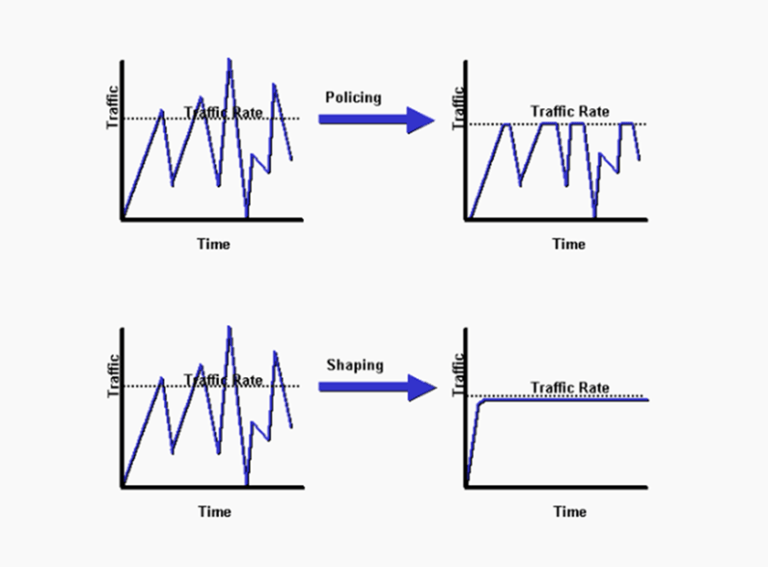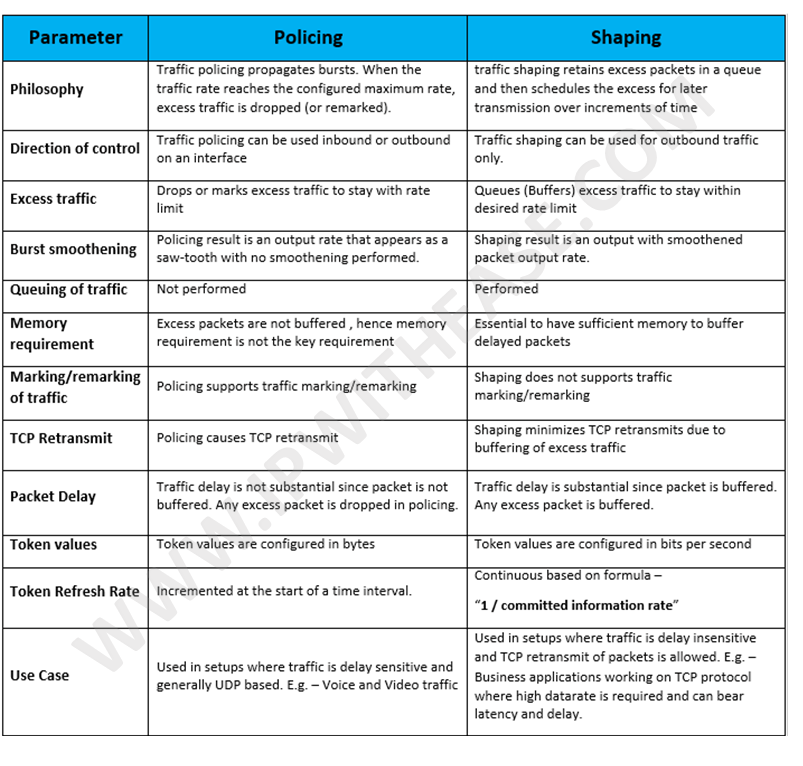Traffic Policing vs Traffic Shaping
These are 2 widely used terms in networking while dealing with Quality of Service (QOS) in LAN and WAN IT environments. Both the terms are used to adjust traffic flow in Networks.Service providers leverage policing and shaping to meet bandwidth agreement with customers. Organizations having multiple sites use Policing and Shaping to provide mission critical (SAP etc.) and Delay sensitive traffic (Voice, Video etc.) enough bandwidth or priority for smooth user experience and meeting Business objectives.
Traffic Policing
It comes into effect after the traffic has crossed the maximum configured rate. The excess traffic is generally dropped or else remarked by lowering the priority field in the IP header. The result of traffic policing is an output rate that appears as a saw-tooth with crests and troughs.
Traffic Shaping
With Traffic Shaping, when the traffic reaches a custom configurable bandwidth threshold, additional packets are queued instead of being dropped, so bandwidth use is limited to the configured amount. Shaping may incur additional delay in traffic reaching the destination.
While Shaping is closely related to queuing and buffer memory, policing does not consider performing queuing and buffering of memory. Another important consideration on traffic policing is that it can be applied on both Inbound as well as outbound interface , while packets going out an interface can only be queued and hence Traffic shaping can be applied on outbound interface
Reference – https://www.cisco.com/c/en/us/support/docs/quality-of-service-qos/qos-policing/19645-policevsshape.html
Traffic Policing is recommended for Voice, Video and Rich media traffic where generally UDP based communication takes place. On the other hand Traffic Shaping is recommended for TCP based applications which can bear delay in traffic but need high data transfer rate like SAP etc.
Difference between Traffic Policing and Traffic Shaping
Below table enumerates the Difference between Traffic Policing and Shaping based on multiple parameters –
Related- Networking Scenario Based Interview Questions
ABOUT THE AUTHOR

You can learn more about her on her linkedin profile – Rashmi Bhardwaj





